Martech, like the marketing industry in general, is awash with buzzwords, phrases and acronyms that can be impenetrable to the outsider, or the beginner.
There's CDPs, DXPs, marketing stacks, lead piping, and all kinds of phrases to confuse the uninitiated.
We're here to help though, with a helpful and hopefully comprehensive dictionary of martech phrases, acronyms and abbreviations...
ABM (Account-based marketing)
Account-based marketing (ABM) is a B2B strategy which focuses sales and marketing resources on high-value accounts or prospects, marketing to one company or organisation rather than several.
The great idea behind this strategy is to focus efforts where they can have the greatest impact on the bottom line, and represents the best use of resources. Indeed, 87% of B2B marketers surveyed by ITSMA said their ABM marketing outperformed other marketing efforts in terms of ROI.
A/B testing
This is a technique to find the best-performing email, landing page, advert etc of two choices. A/B testing works by splitting your inbound traffic equally between two versions of the same page, or by splitting up your email list to send different variants to subscribers.
It's a great way to find the email or page which achieves your conversion goals, and to make decisions and marketing and design using evidence.
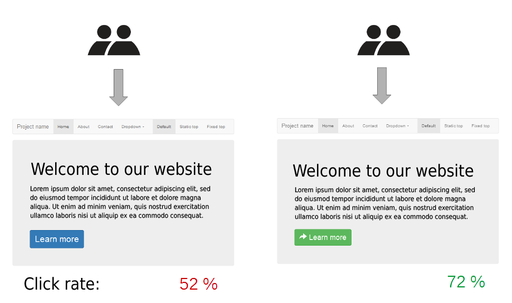
ACV
All-Commodity Volume (ACV) is a measurement of a distributor's total sales of all products relative to the sales of all relevant retailers in a given location.
Agile marketing
Agile marketing is a tactical approach to marketing in which identify important goals and high-value projects to focus their attention on.
These projects are completed quickly, through sprints, for maximum effect, and normally require focus and cooperation between times across a business, hence 'agile'.
AI
In a marketing context, artificial intelligence can be used to carry out marketing activities at scale, or harness the technology to make marketing more effective.
It can provide the ability to collect data, analyse and learn from it before applying the result. It can make data-driven marketing faster and more effective.
One example of its use is Amazon, which uses AI to make personalised product recommendations in real-time. In email marketing, a tool such as Phrasee can analyse and optimise email campaigns quickly, cutting out the lengthier process of A/B testing.
Audience intelligence
Audience intelligence is the ability to find insights about your prospects and customers and use these insights to market to them more effectively.
This is often carried out through social listening and can help brands to identify their target audience and find insights that will allow them to target them with relevant content and marketing.
Audience profiling
Similar in some ways to audience intelligence, audience profiling is the process of defining who your target customer is through analysis of their behaviour across different channels.
This can be automated to work at scale using customer data platforms (CDPs).
Audience segmentation
This is the process of dividing website visitors, email subscribers etc into groups based on criteria such as demographics, customer type, or buying behaviour.
It allows you to market more effectively, perhaps placing more budget into targeting higher spenders, and can inform personalisation efforts.
Average customer value
Average customer value (ACV) tells you how much the average customer is worth to your business. In contrast to customer lifetime value, ACV is a measure which tells you how much a customer is worth right now.
It allows you to calculate the immediate impact a marketing channel has on your business. For example, measured against acquisition costs, it can tell you whether a PPC campaign is delivering value.
Chat bot
A chat bot is a computer program designed to simulate conversation with human users to respond in real-time, often used in a customer service context.
Used well, they can provide usual information to customers quickly and conveniently, saving them from having to contact call centres. Or they can be quite irritating.
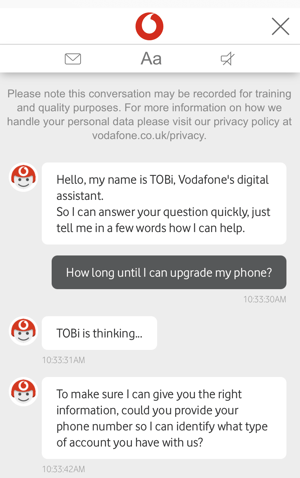
Conversational marketing
Conversational marketing is about engaging customers via one-to-one interactions so that customers proceed through the buying process through personalised conversations.
This can occur across different channels, and often uses live chat, chatbots, and messaging apps.
Customer experience
Customer experience (CX) is the sum total of a customer's interactions with a brand, company or website. This takes in every contact, including marketing, on-site user experience, delivery and post-sales customer service.
It can be positive, negative, or somewhere between the two. It's vitally important as it can be a differentiating factor in competitive markets. A good experience helps you to retain customers and pick up more through recommendations. A negative experience can send them to Trustpilot to write a long rant about your shit customer service.
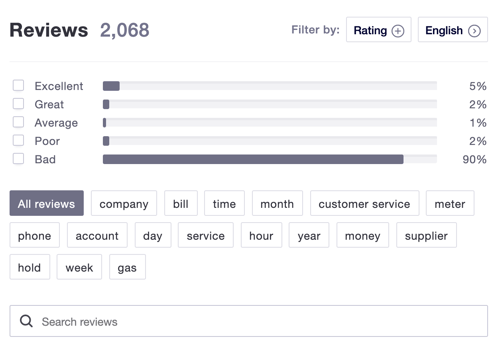
Data compliance
Ensuring the data you hold on users is managed in compliance with government regulations on data privacy such as GDPR.
Data-driven marketing
Marketing which is guided and informed by data on areas such as customer behaviour. Examples include site content personalised to the specific visitor, and segmented email marketing.
Data enhancement
Data enhancement, or data enrichment is the process of adding new data into an existing database to improve accuracy and insight, or enhancing existing data by adding missing data.
Data governance
Data governance is the practices used to ensure that data is usable, accessible and protected, this includes compliance with regulations on data privacy.
Effective governance practices should also help improve analytics, leading to better decision making and improved use of data.
Data management platform
A data management platform (DMP) is a software platform used for collecting and managing customer data. DMPs help businesses to identify audience segments, which can be used to target users more effectively.
Demand generation
Demand generation is the process of creating awareness and demand for your products and services. It's top-of-funnel marketing that uses content through blogs, reports, podcasts etc, as well as social media and email.
The aim is to build an audience that is relevant to and interested in your products and services, so that a good proportion can be converted into leads.
DAM
DAM stands for Digital Asset Management and It’s a piece of software that helps you manage all your digital assets.
Almost every business has digital assets such as images, videos, podcast audio files, infographics, gifs, logos, and more. Digital asset management is about keeping on top of these assets and helping the business stay organised.
Check out our step by step guide to Digital Asset Management Systems.
Digital events
Events hosted and attended online, such as virtual conferences and webinars.
The Covid-19 pandemic has led to a massive increase in such events, and they have benefits in terms of convenience, the ability to access a wider audience, and the chance to collect and learn from customer data.
Check out the digital martech events we'll be hosting over the next few months.
Digital experience platform (DXP)
A digital experience platform (DXP) is the technology used to facilitate interaction and engagement online.
Companies can use DXPs to build, deploy and continually improve websites, portals, mobile and other digital experiences.
Email deliverability
A measure of the ability to deliver emails to your target audience. Deliverability can be impacted by various factors such as spammy subject lines and the use of URL shorteners.
ESP
Email service provider. The platform used to manage and send marketing emails.
ETL
Extract, Transform, Load. The procedure of copying data from one source into another system which displays the data in a different context.
Events technology
Events tech is, as you might have guessed, the tech used to host online / virtual events.
GDPR
The General Data Protection Regulation is a legal framework which sets guidelines for how companies collect and handle personal data.
Growth hacking
Growth hacking is a marketing method which is focused on growing a company's revenues, traffic etc as quickly as possible.
Growth hackers will focus on the techniques and quick wins that drive rapid growth.
IDAM
Identity and Access Management (IDAM) a framework of policies to ensure the appropriate people have the access to the appropriate data.
Identity resolution
This is the process of collecting and matching identifiers across different devices in order to identify one customer. This is key to building up a single customer view.
Inbound marketing
Inbound marketing is a strategy which combines various forms of 'pull' marketing to generate interest in your products and services, often to attract traffic to a website.
This includes content marketing, blogging, SEO, social media and more.
Influencer marketing
Influencer marketing is a form of (mainly social media) marketing using endorsements from influencers - celebrities, experts within a certain field, and so on.
IoT
Internet of things (IoT) is a system of interrelated devices, objects, animals or people that are provided with unique identifiers and the ability to transfer data over a network without requiring human-to-human or human-to-computer interaction.
It's why we now have fridges that can connect to the internet...

iPaaS
Integration platform as a service (iPaaS) is a set of code based automated tools that connect software applications.
Large companies running enterprise-level systems often use iPaaS to integrate applications and data that live on premises and in both public and private clouds.
Journey orchestration
Journey orchestration is a means of bringing teams and tech together to tailor journeys for customers based on previous behaviour, product preferences and more.
Journey orchestration engine
Software designed to analyse customer data in order to improve the customer journey.
Lead generation
Lead generation is the process of gaining customer interest in a product or service, encouraging them to share data which enables sales teams to follow up with potential customers.
Lead generation techniques include webinars, ebooks, white papers and product demos, where the customer provides data (an email address usually) in return for access.
Lead routing
Lead routing is the process of distributing leads to the sales teams.
Lead scoring
This is the process of evaluating leads, taking factors like interest, likelihood of conversion and potential value when deciding which leads to prioritise.
Legacy system
Outdated methodology, computer system or applications.
Live chat
A system that allows the ability to communicate with a customer or a company online via a website or mobile app. This can be a useful option which can be more convenient than telephone customer service and speedier than email.
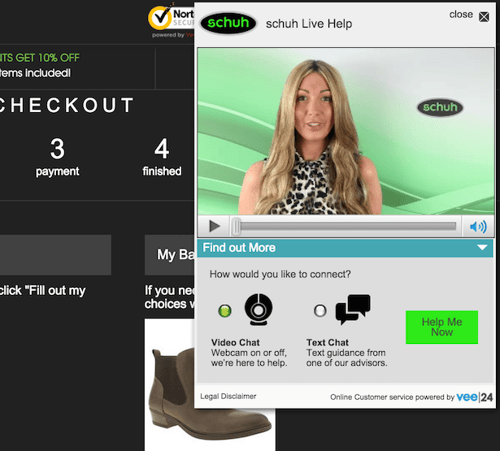
Machine learning
This is the application of artificial intelligence where the machine is able to learn over time.
Marketing automation
Marketing automation is the use of software to automate certain marketing tasks, such as emails and social media posts.
This can be about greater efficiency, and the ability to scale marketing efforts, but it can also improve marketing efforts by allowing greater personalisation.
Marketing ops
Marketing operations is a function within marketing which combines traditional marketing techniques and skills with more technical and analytical knowledge. It's based on the recognition that the development of technology and the pace of change requires a different approach.
Marketing qualified lead (MQL)
A lead who has indicated interest in a service or product and is therefore more likely to convert.
Marketing stack
A marketing stack is a collection of marketing technology tools used to improve marketing activities.
Check out our Marketing Stack Management Guide for more detail.
Martech maturity
A measure of where a company is in terms of marketing skills and technology. See our example Martech maturity matrix in our 4Ps of Marketing Technology guide.
Metaverse
The metaverse is a virtual-reality space in which users can interact with a computer-generated environment and other users within it.
With recent developments, the metaverse offers new options for brands to interact with customers. We can expect more developments in this area in the coming years.
Multichannel
Multichannel is an operational view of how the customer completes transactions across each channel. It can cover the use of different channels for marketing, retail and customer experience. So customer journeys can begin on one channel and end on another, from store to website, from mobile app to social media, and so on.
No code / low code
No code / low code refers to a series of tools and functions within tools which allow marketers with no technical or limited technical knowledge to create and customise apps and other digital products.
Its advantage is that it empowers marketers to create without the need to bring in the relevant technical knowledge, allowing for greater speed of creation.
NFTs
An NFT is a digital asset that represents real-world objects such as art, music and video, which can be bought and sold online.
Omnichannel
Omnichannel, in contrast to multichannel, is about viewing the customer experience from the consumer perspective, and a well-executed omnichannel strategy should allow customers to move between channels with the minimum of friction.
Out of the box
Out of the box (OOTB) refers to a feature or product functionality that works immediately and doesn't require a manual setup.
Personalisation
Tailoring a service or messaging to a specific customer or prospect. This requires customer data to make messaging more personal, and can include things like personalised email marketing or landing pages.
Platform integration
Software that has the ability to connect and play nicely with other software platforms.
Predictive analytics
Predictive analytics is the use of data, algorithms and machine learning techniques to identify the likelihood of future outcomes based on historical data.
In a marketing context, predictive analytics can lead to a greater understanding of which campaigns are working and what will lead to more leads / conversions in future.
RFI
Request for information (RFI) is a business practice of collecting information about the capabilities of various suppliers.
RFP
Request for proposal (RFP) is the practice of formally requesting a quote or proposal from a vendor or supplier.
Sales accepted lead (SAL)
A marketing-qualified lead that has been passed to and accepted by the sales team.
Salestech
Salestech is where sales and technology meet. It refers to the tools which can help sales teams boost their productivity, better understand prospects and customers, and ultimately close more deals.
Check out our comprehensive SalesTech Guide for more.
Search engine marketing (SEO)
The practice of optimising your pages to maximise their ranking positions on search engines. This can include content creation, technical fixes, and link building.
SEO tech
Tools that help sites to carry out various SEO related activities, such as position tracking, technical audits and keywords research.
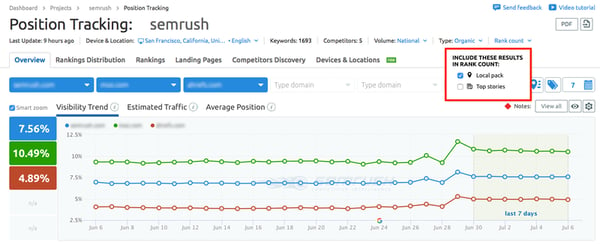
Single customer view
A single customer view is the data a company has on a particular customer, collected and presented using tech tools. which provides a clear overview of them and their data - personal details, purchase history, preferences etc.
It allows you to create a profile of your customer so you can understand more about them and target marketing more effectively.
Social media monitoring / listening
Social media monitoring (or listening) is the practice of monitoring mentions of your brand and products on social media.
This can help you to assess the volume of chat about your brand (and competitors), the impact of campaigns on brand awareness, and can enable you to identify relevant audiences to market to.
Tag management
In marketing, tags are used to collect information about visitors to a website and how they behave on the site. Tag management systems allow for these tags to be implemented, maintained and used.
UI
A user interface (UI) refers to where the user interacts with a website, app or other touchpoint.
UX
User experience (UX) refers to how easily a user interacts with your digital product, perhaps a website, app or email.
Great UX means users can complete the tasks they need to without any friction, perhaps making a purchase. Bad UX can mean the user abandons the interaction.
UX is often assessed by testing products on end users, or by using analytics to see how people use the site, and the exit points and other data which may indicate a problem for users.
Web 3.0
Web 3.0 is seen as the next phase of the internet. It involves a space where people operate on decentralised, almost anonymous platforms, moving away (in theory) from the dominance of tech giants like Google, Facebook, and Twitter.
Web 3.0 was originally called the Semantic Web by World Wide Web inventor Tim Berners-Lee, and was conceived as a more autonomous, intelligent, and open internet.
